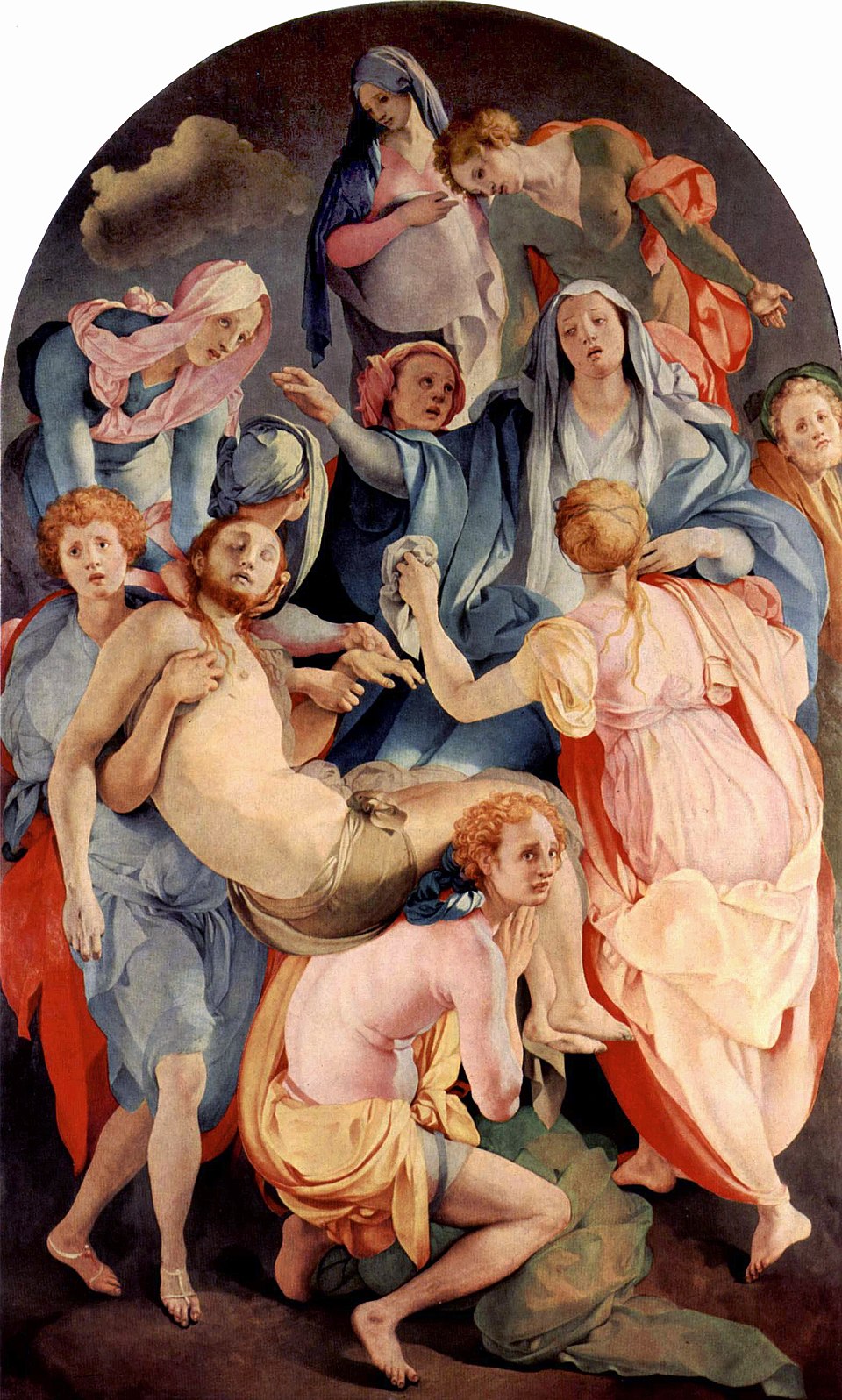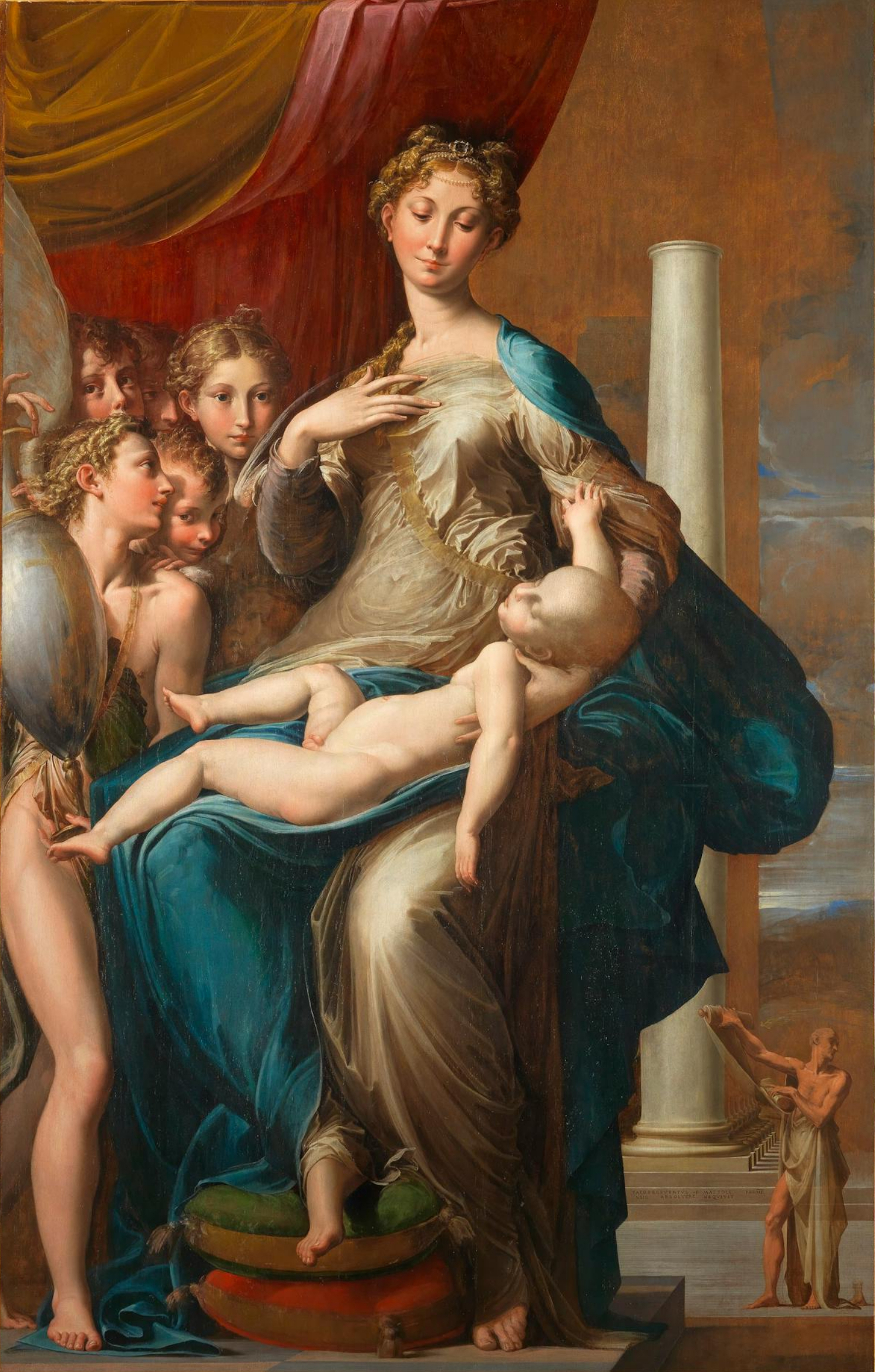Art History Art Information- Exam 2
1/3
There's no tags or description
Looks like no tags are added yet.
Name | Mastery | Learn | Test | Matching | Spaced |
|---|
No study sessions yet.
4 Terms

Pontomo, Entombment, 1528
The style of this painting is mannerism. Paintings were moving away from the High Renaissance and naturalism to distortion. The figures are moving away from the ideal body build proportions. The colors are vibrant and brighter, but do not have the same saturation as past paintings, such as those by Jan Van Eyke.
The body is not accurately represented. The figures are painted as if they are light and float compared to past paintings, making the figures have weight. Space is not clearly defined. One-point linear perspective is not being used because there is nothing in the middle. In the blue robe, there is a representation of Mary. Christ is being carried by two figures. Mary and Christ are not in the middle of the painting and are not the focal point of the painting.
Usually, there is a use of movement in the eyes or hands to direct you to the focal point, but there isn’t in this painting. There are exaggerated gestures of hands and emotional eyes, but they are not pointing in the direction for the viewer to look. They wanted to create an ambiguous subject for the viewer. They decided not to apply one-point linear perspective and dissort the figures to create an unclear narrative and to create a confusing sense of space.
There are symbols in paintings to help the viewer identify what they are looking at, but in this painting, there are not. The figures have an exaggerated sense of emotion compared to the High Renaissance, where there is usually no emotion. They don’t have physical proportions. They are bending in ways they wouldn’t be able to do. They look uncomfortable, and it’s not ideal. The painting’s subject matter plays off the representation of the lamitations, the descent from the cross, and the pieta without the classical ideals. The figures are roles, and the purpose is not identifiable in the painting. Florentine saw this as elagant and stylized with the distorted figures.

Parmigianino, Madonna with the Long Neck, 1535
a
a